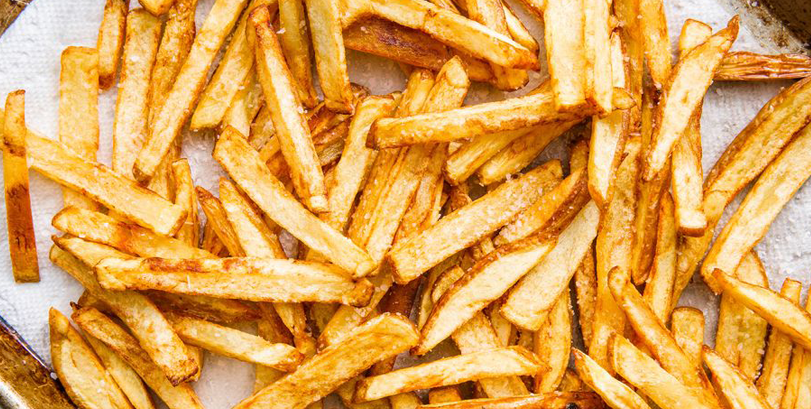HZPC – The Mathematics of French Fries #SWI2014
HZPC is the world-leading developer and seller of high-quality seed potatoes. It is a Dutch company with offices in Metslawier and Joure that operates internationally and that employs over 230 people. To serve its customers better, it also performs research in the growth and processing of its potato varieties. This project is related to the latter of these activities and looks into the optimal cutting of potatoes into French fries in relation to their perceived quality. This perceived quality can be related to properties of the potato such as size, texture (crispiness), and the amount of dry matter. The dry matter here refers to the amount of the potato that remains when all its liquid has been removed by for instance freeze-drying.
To quantify the quality of the fries, HPZC has recently developed a set of experimental setups that enable to measure the dimensions and the amount of dry matter of the raw potato as well as the texture of the French fry upon processing. These measurements are carried out for a particular breed of potato in two-week intervals prior to the harvest in various locations in the last two years. The breed of potato considered is used for the production of MacFries, the fries with the most stringent requirements on the market in terms of length (60 percent larger than 10 cm), appearance, and texture.
Given the relevance of the measurements in the context of the project, we will describe them in the following:
1. potato size measurements: the length and cross-section of an individual potato are measured as a sample of potatoes travels over a conveyor belt. To this end, an optical grader with a camera is used. The length and cross-section are determined as an average of twenty measurements and expressed in a set of parameters.
2. potato dry matter distribution measurements: the dry matter distribution of a potato is measured using a hyperspectral near-infrared camera that allows quantifying the dry matter distribution in terms of pixels in a cross-section of tubers cut in the length direction. Due to the growth of the potato in time, the distribution of the dry matter is typically varying over a cross-section with larger values towards the border and smaller values towards the interior. The distribution of dry matter is binned into the following four sets: 40-50mm, 50-60mm, 60-70mm, and larger than 70mm. It is made available for each individual potato along with its dimensions.
3. fry texture measurements: the texture of the fry is measured in terms of the force required to break the fry. To this end, the fry is typically cut into the length direction from tubers varying between 70 and 130 mm in length. The texture of fry is intimately related to its dry matter content at its breaking point and its original position in the tuber. The texture of the fry will thus strongly depend on whether it was cut from the lateral boundaries or the interior of the potato. The texture is binned into the same four sets as the dry matter distribution, namely, 40-50mm, 50-60mm, 60-70mm, and larger than 70mm.
The goal of the project is two-fold:
1. to develop a mathematical model that allows quantifying the relation between the size (in terms of length) and dry matter distribution of the potato and the measured texture to the quality of the fry;
2. to develop an optimal cutting procedure in terms of the fry diameter for the fries that gives a compromise between the dry matter and texture.


